Review: Celli Maxi 600
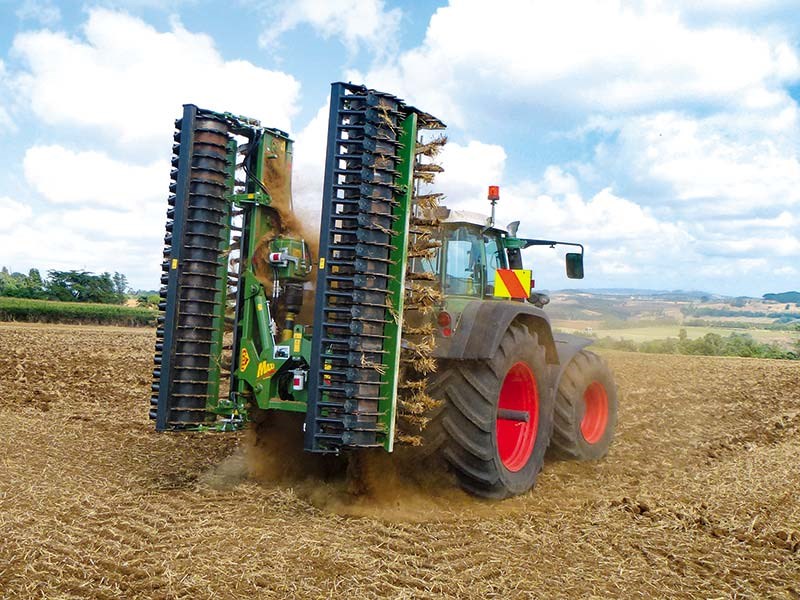

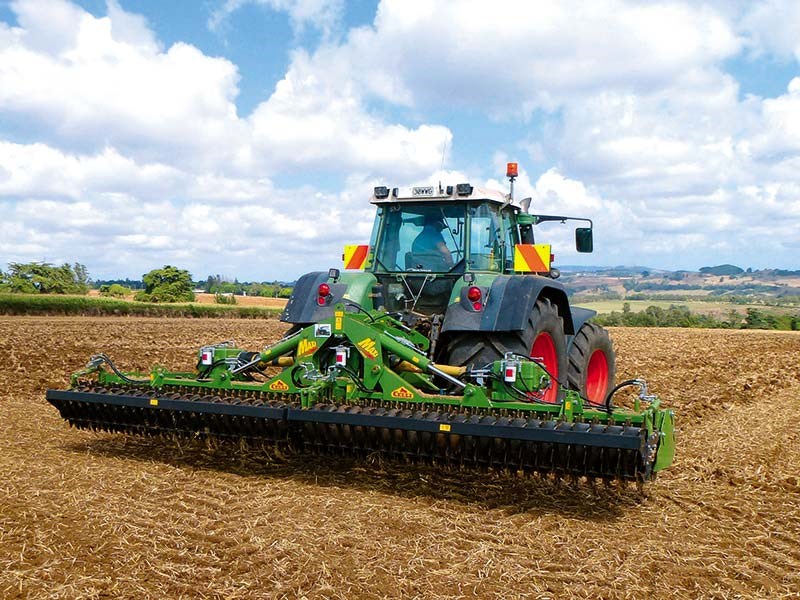

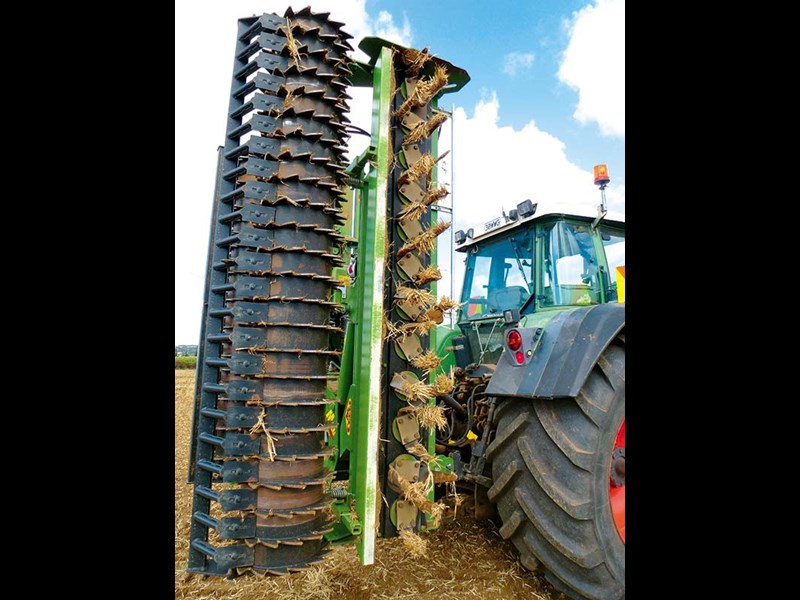

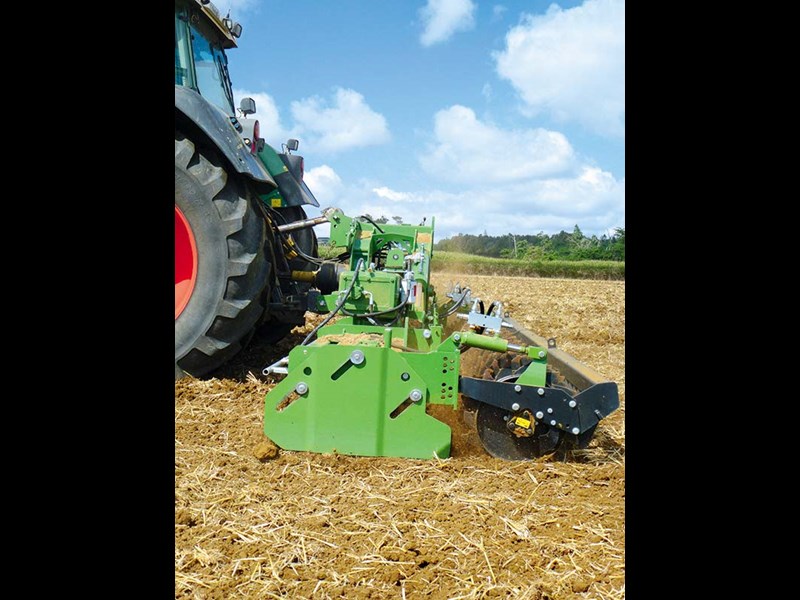

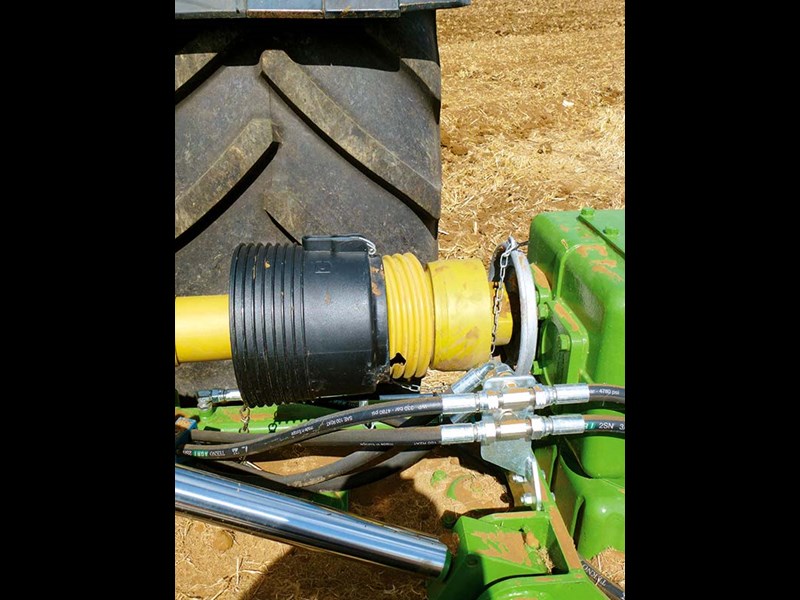


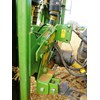
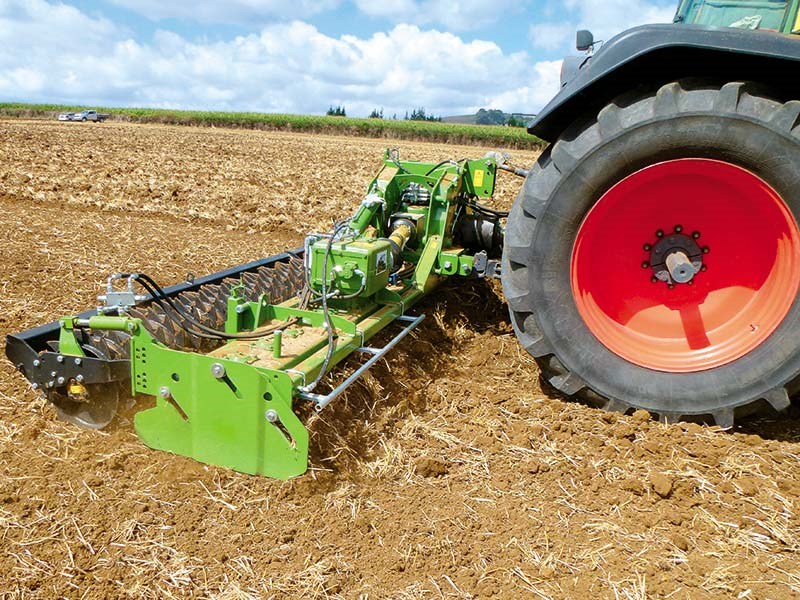


|

|

|

|

|

|

|
Brent Lilley from Farm Trader gets a first-hand look at a Celli Maxi 600 power harrow from Farmgard.
Construction
The Celli Maxi 600 is a six-metre folding power harrow, built tough with the serious user in mind. Across the machine everything is designed high output and with some serious horsepower on the front. To reinforce this, at the Field Day, the Celli was hitched up to a sizable 926 Fendt which never flinched at the task. In the centre of the machine a solid headstock is well built to carry the weight of the two three metre power harrow beds and rollers. Hydraulic rams are used to fold the machine vertically which gives a sensible 2.5m transport width.
Four safety check valves are fitted to all hydraulic rams on the machine. Requiring activation pressure from both sides, it will prevent hydraulic failure. A mechanical latch which engages when the machine is folded also gives the operator peace of mind, and a sequencing valve unlocks the locking latch first, before the machine is unfolded.
Driveline
With a machine rated to 400hp, the driveline needs to be able to handle a serious amount of power. A central gearbox on the headstock splits the power to each side, therefore effectively halving it. Ever reliable Walterscheid drive shafts with separate cam clutches protect from overload damage and transfer the power out to the bed gearboxes, which are each rated to 250hp.
Drive shafts feature quick release guards making it easy to grease the yokes (which will hopefully encourage them to be done). A problem with this machine and virtually every other folding machine on the market is that the drive shafts can be damaged if the yokes aren't in the right position when the machine is folded. While not a major concern for some, I've heard of people who have fitted cameras to check they are correctly aligned before folding.
Synthetic oil is used throughout the machine. Each of the three gear boxes is self-contained with its own filter and pump. Cleverly, the oil from each gear box also is pumped through an area of the box section frame of the machine. This acts as a heat exchanger with the air temperature to keep the oil cool, as well as doubling as a reservoir. I'm told this setup up works well with little trouble keeping oil cool and no problems with radiators blocking up with dust.

Gear bed
The bed and rotors are definitely the business end of a power harrow. It's the construction of the bed which sets the Celli apart from many other machines on the market. Where other machines use a bed that is bolted together, Celli builds theirs out of eight-millimetre-high grade folded plate steel, welded together in a closed U shape to give an incredibly strong and rigid bed.
The only possible downside to a fully welded bed is that if something does ever go wrong inside the bed, all gears need to be removed out of the end of the bed for repair, which somewhat of a major. However, this should be a long way down the track, if ever, on a well-built machine like the Celli.
Single piece hardened steel shafts fitted with straight cut gear cogs are used inside the oil filled bed to drive each rotor. Celli has stuck to a proven design that uses one bearing under the gear, and one above, which gives the greatest stability to the drive shaft to keep everything running straight and true. One pitfall with this set up in some machines is that the top bearing relies solely on oil splash from the bed for lubrication, which is not always reliable.
To counter this problem, Celli has 'greaseable' top bearings on each rotor. A steel retainer under each top bearing prevents grease or any other material from entering the bed. Under the bottom bearing, double marine seals keep oil in the trough and a steel labyrinth prevent soil or foreign material from getting in.
Rotors
Although there are many differing opinions on the debate of smaller rotors versus less larger rotors, the argument stacks up for the smaller rotors. Celli agree, using 24 rotors over six metres rather than 20 offered by many competitors. This increased number of rotors, when combined with a 15-degree phasing between each pair of tines on the rotors, means each tine is biting at a smaller amount of soil at a different time. This lowers the power requirements and fuel consumption, while creating a better finer seedbed.
Cleverly, a pressed steel stone protection plate fits in underneath the bed and above the flange that the tines are fixed to. This serves two important purposes, firstly it keeps stones and trash away from the rotor shafts, preventing damage and it also keeps soil down where the times can break it up.
On the outer edges of the machine, highly wear resistant steel guide plates also keep the soil under the machine. These are cleverly mounted on a slide setup, which sees them move upwards vertically as the power harrow is lowered, rather than opening out wider than the machine. This leaves a level finish pass to pass. Quick fit tines are offered as an option by Celli, although on this sized machine most people usually decide they are not needed, as tines are easy to change with a rattle gun when it's folded.

Levelling bar and roller
The levelling bar which sits behind the rotors is easily adjusted with screw jack style adjusters, although on the test machine, a scale would have made it easier to set all four at the same height. A spring setup allows some movement backwards and upwards if an object is encountered. Everyone has a preference to what type of roller suits the conditions and Celli offers a range of options which include cage, coil, deep ring and packer rollers.
The machine on the test day was fitted with the packer roller which is by far the most popular. Its large 550mm diameter makes it less prone to blocking up and the heavy nature leaves a firm smooth finish. Great attention to detail by Celli sees the bearings on each end of the roller fitted with a labyrinth seal setup to prevent soil from damaging the bearings.
Hydraulic rams on the machine tested are a great option that allows the roller, and therefore the working depth of the tines, to be adjusted on the move from the tractor seat. Check valves are once again used to prevent the rams creeping or danger from hydraulic failure.
The verdict
The Celli Maxi 600 sits near the top of the company’s range and incorporates some impressive features, such as the fully welded gear bed, along with three heavy duty gear boxes that give an impressive 400hp rating. An increased number of smaller rotors along with the 15-degree phasing reportedly lowers power requirements while producing a finer seedbed.
Peace of mind for buyers will also come from the fact that Celli has now been building tillage equipment in Italy for around 60 years and have a long standing reputation for producing quality machines.
Pros
- Fully welded gear bed for strength and rigidity.
- Second bearing on the rotor shaft above the drive gear to keep everything straight and true, is 'greasable' to insure adequate lubrication.
- More smaller rotors and 15 degree phasing for lower horsepower requirements and a finer seedbed.
- Wear resistant side plates slide vertically to keep soil under the machine.
- Separate filters and oil coolers on all gearboxes that use the frame of the power harrow to cool the gear oil.
- Check valves on all hydraulic rams for safety.
Cons
- Limited access into the bed if there is ever problems.
- Potential to damage driveshafts when the machine is folded.
For the latest farm machinery reviews, subscribe to Farm Trader magazine here.
Keep up to date in the industry by signing up to Farm Trader's free newsletter or liking us on Facebook






